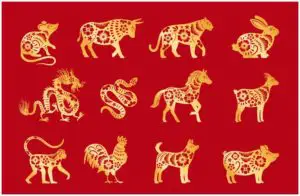Ide Were Were Meaning & Lyrics:
“Ide Were Were” is a Yoruban, West African song about Oshun, the goddess of rivers, seashores, and love.
Overview
The Yoruba are an ethnic group that primarily inhabits Western Africa, particularly Nigeria, Benin, and Togo.
Most Yoruban people live in Nigeria, where the ethnic group makes up almost 15% of the population.
There are also Yoruban populations in Europe and Asia, and the Yoruban belief system has spread to Latin America.
While estimates vary, some scholars believe that there could be more than 100 million adherents of the Yoruban spiritual tradition worldwide.
Lyrics
Ide Were Were
Ide were were nita oshun
ide were were
ide were were nita oshun
ide were were nita ya
ocha kiniba nita oshun
cheke, cheke, cheke
nita ya
ide were were
READ MORE: Red Tara Mantra: Benefits & Meaning
Ide Were Were Mantra – Meaning
The lyrics of “Ide Were Were” are an appeal to Oshun, the Yoruban goddess of love.
Oshun is also known as Iyalode and Laketi, and due to the diffusion of Yoruban culture, she is a common figure in the Santeria religion.
In places such as Cuba and Brazil, she is known as Oxum.
The Yoruban word for “goddess” is “orisa.”
The concept of the orisa is a key part of the Yoruban religion.
The orisa reflects the diverse forms that gods can take, and they are presented as anthropomorphized and having human traits.
There are 401 orisa in the Yoruban belief system, and Oshun is one of the most popular and best-known of them.
According to Yoruban beliefs, humans came into existence when the supreme god Olodumare sent 17 orishas to the Earth to produce humanity, and Oshun was the only female deity of the original 17.
According to that myth, the gods were unable to complete the task of producing human beings on their own, so Oshun agreed to provide her with powerful waters to bring Earth and humanity to life.
In this sense, all of humanity owes its existence to Oshun; she is the mother of all humans (“Yeve”).
In many stories, she is presented as the protector, savior, and nurturer of humanity.
Symbolically, this point is made clear by the fact that all people need water, so in that sense, Oshun is relevant to all humans and is linked to the rise of agriculture and the giving of life; she is the cause of things coming into bloom.
For this reason, Oshun is commonly associated with themes of fertility, love, water, purity, and sensuality.
“Ide Were Were” refers to a necklace, which is a symbol of a person’s introduction to love.
In that regard, there might be a connection between the reference to the necklace and the fact that Oshun is often shown wearing yellow or metal jewelry made of materials such as copper and gold.
More generally, she is commonly represented as beautiful, charming, and flirtatious and is sometimes depicted as having long, flowing dreadlocks.
In some stories, Oshun is described as having brought sweetness and love to the world while nurturing human existence.
For this reason, it is common for believers to appeal to Oshun when pursuing love or fertility, much as we see in the case of “Ide Were Were.”
In this regard, some commentators have suggested loose parallels between Oshun and Isis or Aphrodite insofar as adherents commonly appeal to those gods when looking for love or fertility.
Indeed, the Yoruban people continue to celebrate the Oshun festival in honor of the goddess.
Oshun devotees and other people of the Yoruba religious tradition go to the Oshun River to pay homage, make a sacrifice, and ask for a variety of things such as wealth, children, and better health—and, as the song might suggest, love.
Offerings to the goddess at festivals of this type have traditionally included honey, oranges, wine, and perfume.
In the case of “Ide Were Were,” the offerings might be thought to include song.
READ MORE: Om Purnamadah Purnamidam: Complete Lyrics, Meaning, Benefits
Conclusion
“Ide Were Were” is a powerful Yoruban song about the goddess of love, Oshun. It can soothe both the speaker and listener while serving as an appeal for an introduction to love.
Images credit – @Getty
READ THIS NEXT: Buddha Shakyamuni Mantra
- About the Author
- Latest Posts
As a founder and chief author at InsightState.com, Bulgarea Candin helps readers on their spiritual journeys. His writings are designed to inspire creativity and personal growth, guiding readers on their journey to a more fulfilled and enlightened life.


